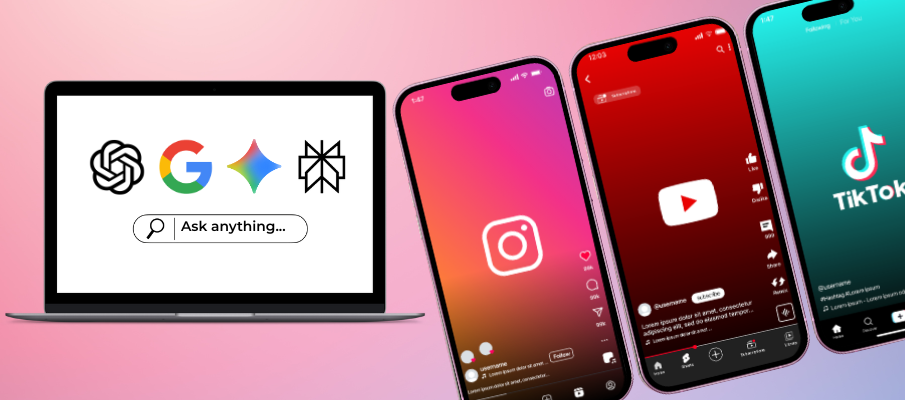Cryptocurrency, blockchain, marketing and tourism...A whole new world, or business as usual?
By Tomahawk on

Crypto. Bitcoin. Blockchain. You’re probably starting to hear these words more and more frequently. And even for Millennials who are used to quickly grasping new digital concepts and trends, they can still seem like a lot to digest.
At Tomahawk we’ve been hearing a bit of chatter recently about the role of cryptocurrency in marketing . Naturally, tourism operators have questions. Do they need to be using it? Is there a commercial opportunity to get involved sooner rather than later? Should they be preparing for the Metaverse in some way? What systems do they need to have in place? There are a lot of questions, but not a lot of answers that make sense.
So let’s start at the beginning – what is cryptocurrency, and what is blockchain?
Cryptocurrency is a form of currency that is digital or virtual. It sits outside the traditional banking system and instead, transactions are made online using secure blockchain technology – which is a decentralised digital ledger. While blockchain has other uses that extend beyond cryptocurrency (more on this later!), the rise in crypto’s popularity is largely responsible for blockchain becoming so widespread.
Cryptocurrencies (like Bitcoin) are subject to rises and falls in value depending on supply and demand, which is why you’ve probably heard talk about people making and losing money from their investments. Anyone with access to the world wide web can purchase cryptocurrency – whether it be for an investment, to buy digital assets or simply to diversify their financial portfolio.
So how are cryptocurrency and blockchain technology impacting marketing - and how can travel and tourism operators leverage these new marketing opportunities?
The impact of blockchain on digital marketing
Because blockchain is a decentralised system, it has the ability to remove the third party in digital advertising. Many start-ups are utilising blockchain technology to create new web browsers and decentralised social media channels that operate independently, putting more control in users’ hands.
This means that instead of having a gatekeeper that controls things like ad visibility and algorithms, these platforms will give content creators (or advertisers) more control over who sees their content, while similarly giving users more control over what they see and who they engage with. They are creating direct relationships between consumers and content creators (or advertisers), where consumers earn rewards and directly remunerate creators using tokens for cryptocurrencies.
Ultimately, for tourism operators and all business owners, success on these new platforms points to knowing your target audience well and creating consistent, engaging content.
Blockchain, crypto and online payments
Cryptocurrency is fast becoming a mainstream payment option, with many e-commerce websites allowing crypto payments for items like cars, jewellery, subscriptions and even insurance. And while you can’t pay directly with cryptocurrency at your local Countdown just yet, there are opportunities to purchase gift cards or debit cards online using cryptocurrency – so paying for your groceries using crypto is not as wild as it sounds.
Some travel brands have been quick to jump on the crypto bandwagon, including Online Travel Agents (OTAs). One particular OTA, Travala, accepts over 50 cryptocurrencies and has become renowned for this,
with an incredible 70% of its bookings made in crypto. Expedia is also now allowing customers to pay with crypto and it’s only a matter of time before the others follow suit.
As a tourism operator, accepting cryptocurrency as a direct form of payment can give you access to new markets, offer a point of difference and help with brand positioning – particularly if your target market is young, tech-savvy, entrepreneurial adults. You can engage a third-party vendor to handle all your crypto transactions making it relatively simple to manage – but there are tax implications to consider too. So we recommend chatting to your accountant before diving straight in the deep end!

Cryptocurrencies and advertising campaigns
Like any good trend, cryptocurrency has opened doors to new and exciting advertising opportunities. There are now ‘crypto cashback’ platforms like StormX, where users earn a percentage of their spend back from online purchases made at participating retailers. With companies like Shopback they earn cash rewards, but with StormX they earn crypto instead. Brands like Adidas, Nike and Levis are all using StormX – and so are some savvy tourism destinations like Hamilton Island.

These ‘crypto-back’ offers help brands to reach new audiences and generate good material for their own advertising campaigns. They can appeal not only to those audiences who already use crypto – but also to those who want to get their foot in the door with as little risk as possible.
Thinking about the environment
Cryptocurrency coins are generated through a process called ‘mining’ which uses computing power to solve equations, validate information and add transaction records to a blockchain ledger. It takes a significant amount of energy and resources to mine crypto, and the two ‘giants’ (Bitcoin and Ethereum) are contributing dramatically to carbon emissions. Some Bitcoin mining operations have also partnered or co-located with fossil fuel power plants that were on the brink of collapse, utilising fossil fuels that wouldn’t have otherwise been extracted and keeping these plants running.
Energy usage comparisons have also been made between cryptocurrency transactions and credit/debit card transactions, with most cryptocurrencies using substantially more energy per transaction. While some experts say these comparisons are futile right now because the currencies are still being used predominantly for different purposes (everyday purchases vs investments), it’s an important consideration for tourism operators to take into account when considering their acceptance of cryptocurrencies as payment in the current climate.
In terms of the bigger picture, there are all sorts of unknowns as to how these environmental impacts could ultimately affect tourism. If mining continues to increase carbon missions, that’s bad news for climate change, which of course spells bad news for all of us.

Crypto, blockchain and your brand
There’s certainly a lot of information out there on cryptocurrency and blockchain and it’s always good to be familiar with current trends and advances in technology. But while crypto and blockchain present some incredible opportunities for tourism operators, we always recommend coming back to your brand to decide whether it’s the right timing for you.
Does your target market use crypto or would they be intimidated by the concept? Is your property modern and innovative with all the mod-cons or somewhere people go to escape the chaos of modern life? Cryptocurrencies use huge amounts of energy, and it’s estimated that it’s estimated that 0.21% of all of the world’s electricity goes to powering Bitcoin farms... Does this align with your sustainability policy?
Ultimately, there are lots of these questions we need to ask ourselves and hence there is no better time to revisit your brand and target personas…
If you need some help with that, feel free to give us a shout!
Read more articles
10 SEO Hidden Secrets You Probably Haven't Thought Of
By Tomahawk |

Everyone knows the basics of SEO: use keywords, write great content, get backlinks, keep your site speedy. But what about the less obvious stuff? Those subtle signals that can give your website a quiet nudge up the rankings while...
New Ways Travellers Plan & Book: From AI to Social Search
By Tomahawk |
Definition of a Search Engine
As AI and social media has evolved, “search engine” no longer just means Google. The definition of a search engine is now about how travellers find trust, inspiration, and the confidence to...

